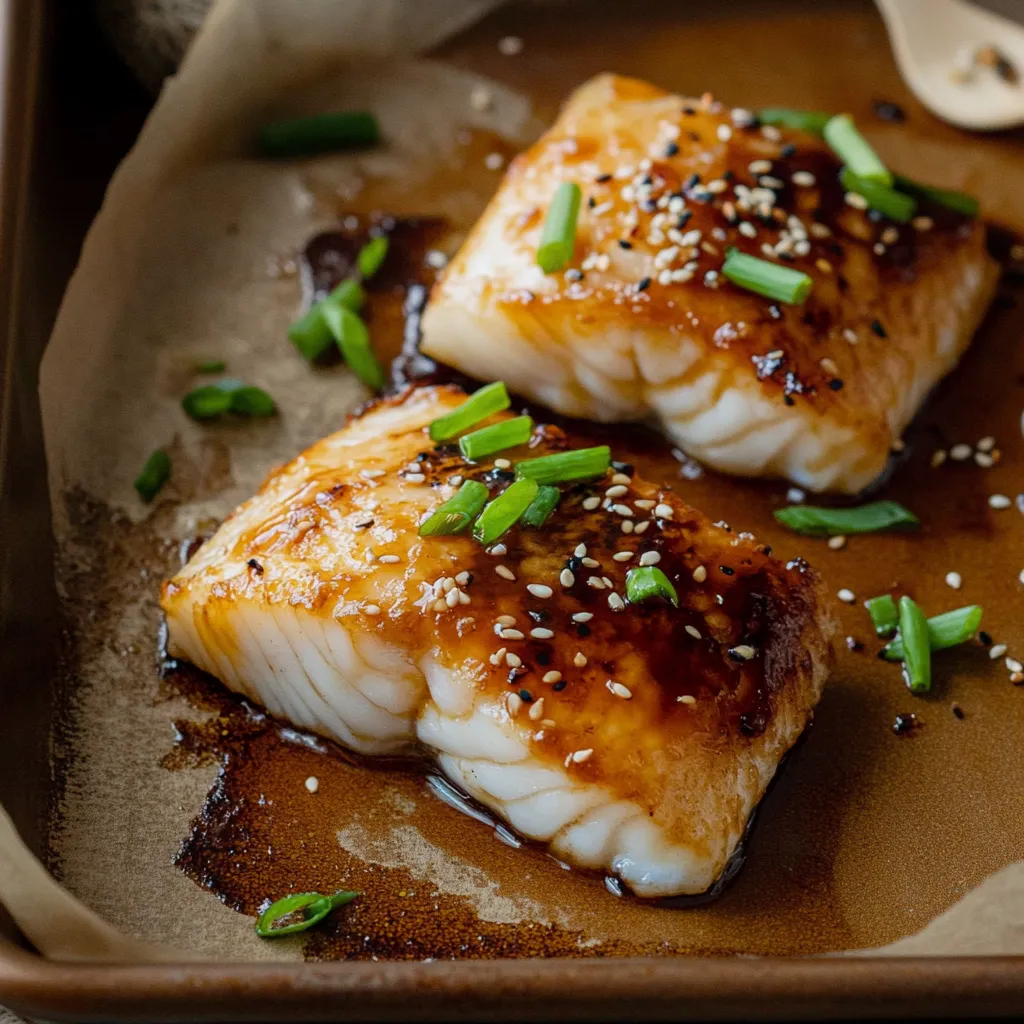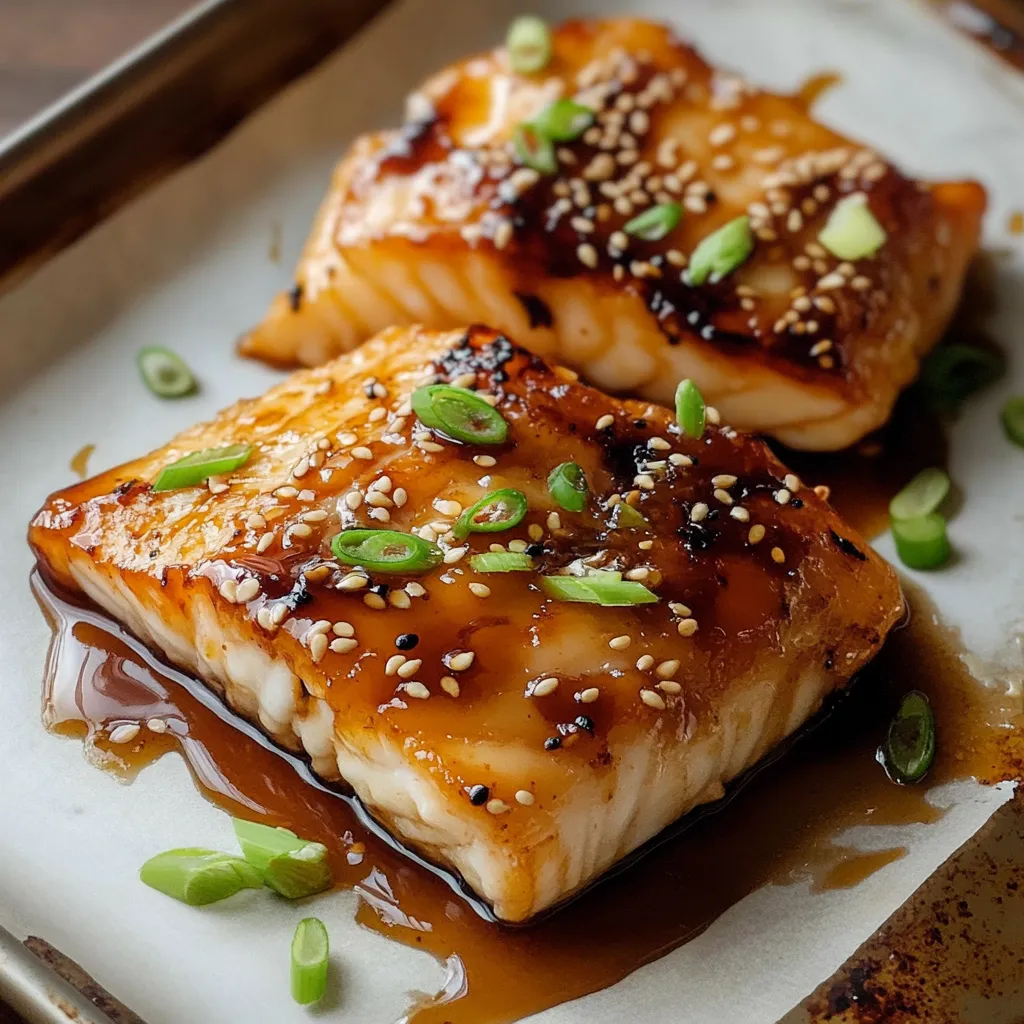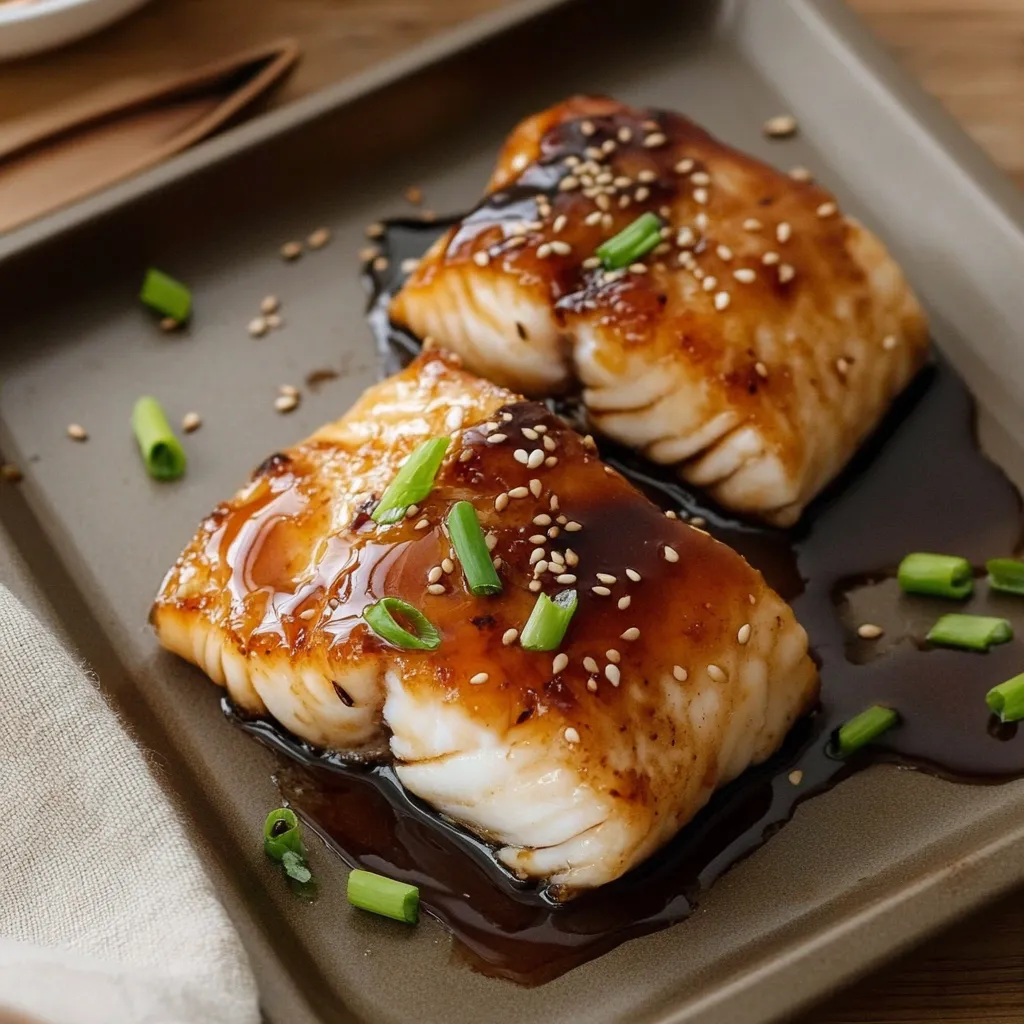 Pin it
Pin it
Sweet honey paired with savory soy sauce turns ordinary cod into something special. This dish mixes Asian flavors just right - the honey and soy make a tasty outer layer while keeping the fish juicy inside. You don't need fancy cooking skills or weird ingredients to make this weeknight meal feel like restaurant food.
I made this glazed fish for my family just the other day, and my nephew who usually hates seafood wanted more! The flavors weren't weird or scary but still made dinner feel like something special.
Key Ingredients and Shopping Tips
- Cod Fillets: Go for thick, solid pieces that look clear, not cloudy, and don't smell fishy. When you touch it, the meat should bounce back. Wild Pacific cod tastes best, though good farm-raised fish works fine too
- Honey: Grab real, unfiltered honey for better flavor. Honey from nearby places often brings nice flowery notes to your dish
- Soy Sauce: Good quality Japanese or Korean brands give more depth than regular grocery store stuff. Light soy works better so it won't drown out the fish taste
- Fresh Ginger: Pick pieces that feel hard with smooth skin. Younger ginger has a softer, more fragrant taste that's perfect here
- Sesame Oil: Get the dark toasted kind for real flavor. It should be dark amber and smell really strong
- Rice Vinegar: Buy the plain kind without added seasonings so you can tweak the flavor yourself
Step-by-Step Cooking Guide
- First: Mix Your Glaze
- Set everything out where you can reach it and mix the soy sauce, honey, and sesame oil in a small bowl. It should be thick enough to stick to a spoon. Grate your ginger straight into the bowl to catch all the good stuff. Stir until everything's completely mixed together.
- Second: Get Your Fish Ready
- Dry your cod really well with paper towels so the glaze sticks properly. Check for any little bones and pull them out with tweezers. Let the fish sit out for about 15 minutes while you work on other things.
- Third: Coat and Rest
- Brush the glaze all over each piece of fish. Put them in a glass dish with some space between each piece. Cover and stick in the fridge for 30 minutes up to 2 hours - this gets the flavor into the fish without making it mushy.
- Fourth: Set Up Your Oven
- Move your oven rack so it's about 6 inches from the broiler for the best browning. Line a baking sheet with parchment and add a bit of oil so nothing sticks. Put the thicker parts of the fish toward the outside of the pan where it's hotter.
- Fifth: Cook With Care
- Start broiling on low and brush on more glaze every few minutes. This layering makes the flavor deeper and creates a shiny finish. Look for gentle bubbling around the edges of the fish - that shows it's cooking at the right temp.
 Pin it
Pin it
Smart Timing and Heat Management
Getting to know how your broiler works matters a lot for this dish. Every oven heats a bit differently, so watch what's happening. Your fish should gently sizzle but not smoke, and the glaze should slowly turn brown. The inside should reach about 135°F for medium cooking, which keeps it moist and flaky.
How Your Fish Changes While Cooking
As your cod cooks, you'll see the meat turn from clear to white from the bottom up. The top gets a beautiful golden-brown color as the honey caramelizes. When you see tiny bubbles forming in the flesh, that means the fish's natural oils are coming out - a good sign it's cooking right.
Prep Ahead and Leftovers
You can make the glaze up to three days early and keep it in the fridge in a sealed container. Just warm it up a bit before using if it gets too thick. If you have leftover fish, it'll stay good in the fridge for about two days.
Changing With The Seasons
In summer, try adding Thai basil or cilantro to your glaze. Winter fish tastes great with warm spices like star anise or cinnamon mixed in. For spring, add some fresh lemon or lime zest, and in fall, swap the honey for maple syrup for deeper flavor.
Fixing Common Problems
If your glaze starts getting too dark too fast, cover the fish loosely with foil to stop it from burning. Thicker pieces of fish need more time at lower heat. If your fish is releasing too much water, spend more time drying it with paper towels before adding the glaze.
My family really loves the ginger in this dish. I started growing ginger at home last month, and wow, using fresh-picked ginger makes such a big difference. That warm, spicy kick it adds to the glaze has become what makes this dish special at our house.
This has become my favorite way to cook cod, turning a basic fish into something really memorable. Adding the glaze several times while cooking creates amazing flavor but doesn't hide the natural sweetness of the cod. Whether it's just a regular Tuesday dinner or I'm trying to impress friends, this recipe always turns out great without being complicated.
 Pin it
Pin it
Frequently Asked Questions
- → Can I swap cod for other fish?
- Of course! Halibut, rockfish, haddock, sea bass, or black cod work great too.
- → How do I check if the fish is cooked?
- When the internal temperature hits 135-140°F and the fish flakes with a fork, it’s good to go.
- → Is it possible to prepare the glaze early?
- Yep, make it up to two days ahead and keep it in the fridge.
- → What can I use if I don't have honey?
- Try maple syrup or brown sugar—they’ll give a similar sweet kick.
- → What should I serve on the side?
- Steamed rice, stir-fried veggies, or a crunchy Asian slaw pair wonderfully.
